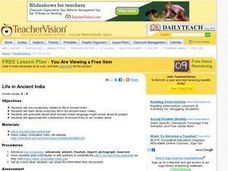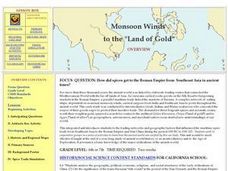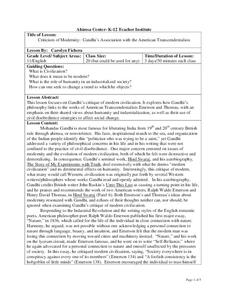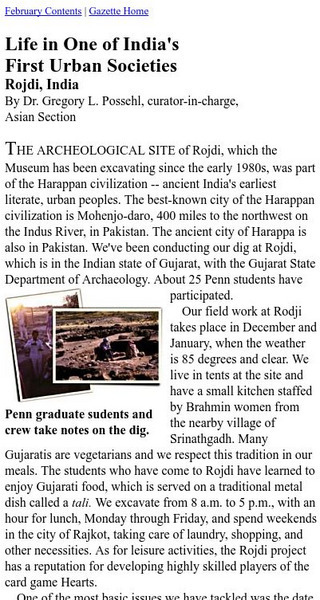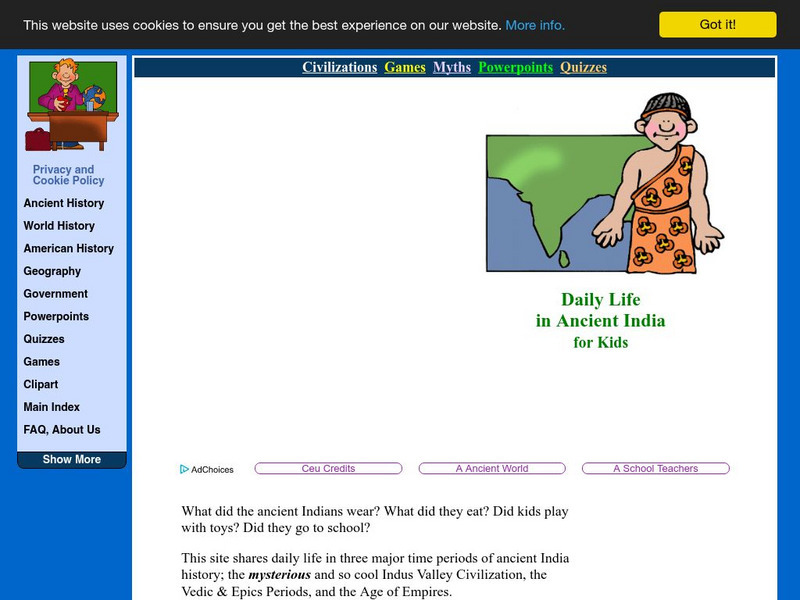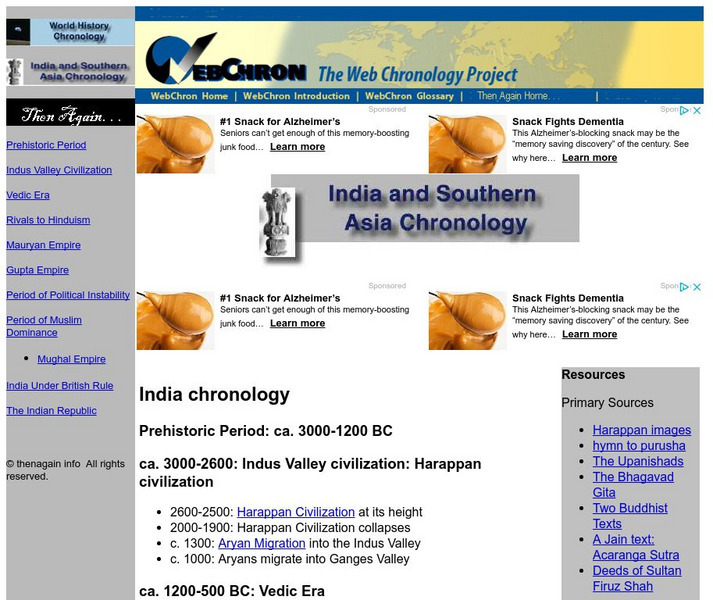Curated OER
Class, At-ten-tion!
Learners explore alphabetical and chronological organization through geography. In this lesson on ancient India, students use computers to create and publish autobiographical time lines to illustrate important events in their lives....
New York State Education Department
Global History and Geography Examination: January 2016
What do the Inca Civilization, Wittenburg Church, and India's economy in the Mughal Period have in common? The well-rounded standardized test challenges scholars to remember all of them. They use different graphics and maps to answer...
Curated OER
Create a Board Game
Students research, design, and create a game board based on information learned in ancient civilizations' social studies units. They utilize computer technology to research the project, as well as, textbooks, in-class library and video...
Curated OER
Life in Ancient India
Students study Ancient India and the vocabulary, language, and everyday life associated with India. They build a time capsule representing their own world for future civilizations to discover. They create labels for each item, giving a...
Curated OER
Monsoon Winds to the "Land of Gold"
Students recognize environmental factors that influenced maritime trade routes and the establishment of major trading centers in classical times. They evaluate perceptions of the ancient world through ancient maps and primary source...
Curated OER
Silk Road Caravan
Young scholars determine how the geographic features of the Silk Road trade route contributed to the economic development and diffusion of culture in both Eastern and Western Civilizations.
Curated OER
Seventh Grade Social Studies Test
In this Georgia social studies assessment worksheet, 7th graders respond to thirty multiple choice questions based on seventh grade social studies skills.
School District of Palm Beach County
Timelines
What do BC and AD mean on a timeline? What is the difference between a decade and a century? Here is a nice handout that offers all the foundational knowledge your young historians will need on how to look at historical timelines.
Curated OER
Let's Spice It With Pepper
Learners identify and locate the areas in which pepper and spices orginated. On a map, they locate the areas and write the name of the spice that is found there. They use historical events to trace its route to the Americas. They...
Curated OER
Indus Valley Civilization
Students explore the history and geographic background of the Indus Valley. Student research the area and create a travel brochure based on the information.
Curated OER
Criticism of Modernity: Gandhi's Association with the American Transcendentalists
Eleventh graders explore Gandhi's philosophy links to the works of American Transcendentalists Emerson and Thoreau. In this transcendentalism lesson, 11th graders discuss essential questions about civilization and modernity.
Curated OER
Geography Game
Second graders, in groups, selects a letter as a starting point and announces the direction in which he intends to move on a map. The team that closes a square takes possession of the square and marks it with their symbol.
Curated OER
The Chinese Produce Paper as We Know it Today
Tenth graders explore where paper originated and its importance from the Chinese to the rest of the world. They list ten ways that they use paper on a daily basis and rate that use on a scale from one to ten. Each group also brainstorms...
Curated OER
Archaeological Finds
Students demonstrate the goals and methods of archaeology and write a report of an archaeological dig at a site associated with a specific culture. They explore the science of archaeology and how it contributes to the understanding of...
Other
University of North Carolina at Pembroke: Lecture Notes: Ancient India and China
Lengthy illustrated notes, to accompany a university-level course, on the rise and spread of civilization in India and China.
Other
Primary Source: Online Curriculum
A collection of three teacher-developed curricular units that use primary resources. Topics include the Ottomans, river pollution in India, and Chinese bronze bells. Additional units are available for a reasonably priced membership.
University of Pennsylvania
University of Pennsylvania: Life in One of India's First Urban Societies
This article in The Pennsylvania Gazette is about an archaeological excavation at Rojdi, India, believed to be a site of the Harappan civilization. Findings at the Rojdi dig, which include houses, courtyards, food-storage areas, and...
United Nations
Unesco: Archaeological Ruins at Moenjodaro
This World Heritage website looks at the ancient city of Moenjodaro in the Indus Valley. Found here are a description, maps, documentation, photos, videos, and information about funding assistance for its preservation.
Lin and Don Donn
Lin and Don Donn: Daily Life in Ancient India
This personal site takes a comprehensive look at daily life in ancient India written at the level of beginning students of history.
Lin and Don Donn
Lin and Don Donn: Daily Life in Ancient India
This site from Lin and Don Donn shares daily life in three major time periods of ancient Indian history. The periods referenced are the Indus Valley Civilization, the Vedic and Epics Periods, and the Age of Empires. This site is designed...
Stephen Byrne
History for Kids: Daily Life in Ancient India
History overview of what daily life in Ancient India was like. The author talks about the clothing, children's games and some of the history of India beginning with the Harappa and Mohenjo-Daro civilizations.
Then Again
Then Again: Web Chron: India and Southern Asia
On his website, a history professor provides a brief timeline of the history of India and Southeast Asia. Key words in each entry are highlighted as links for additional specific information and pictures. Link takes you to the index...
Stephen Byrne
History for Kids: Ancient Indian Art
Reference material on the art of ancient India talks about the mysteries and religious symbolism embedded in the art and architecture of ancient river valley civilization.



